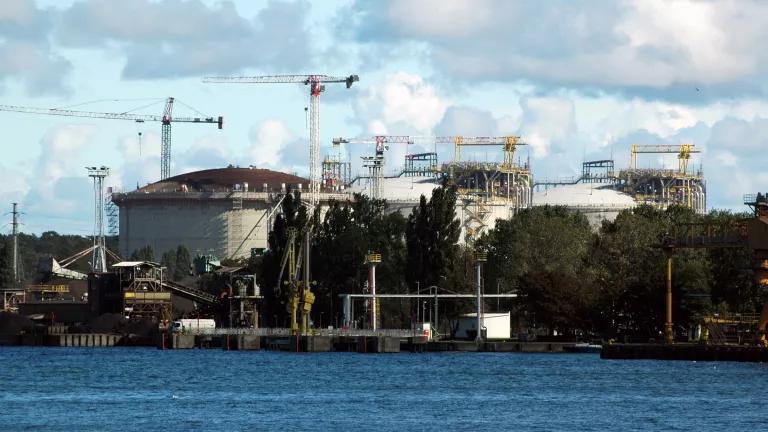NRDC Analysis: Clean Energy Trumps Liquefied Natural Gas
Clean alternatives to LNG-fired power are competitive today and must be front and center in energy transition discussions at COP28 and beyond.

Mike Mareen/Shutterstock
Heading into the first Global Stocktake (GST) under the United Nations climate summit (COP28) in Dubai, the world recognizes that collective efforts to first peak and then nearly halve greenhouse gas emissions within this decade are still falling short by a wide margin. While there has been meaningful progress across some sectors, countries must urgently slash emissions. The GST offers an important opportunity to realign pledges with what climate science demands in order to accelerate global climate action.
Within this context, a handful of countries—in particular, the United States and Qatar—continue to expand global liquefied natural gas (LNG) supply and trade. LNG is a planet-warming fossil fuel with a notably large footprint, attributed to its carbon-intensive production. This LNG push must be assessed against a simple Latin phrase: cui bono. Who benefits? It is certainly not the climate, our planet, or our communities. Instead, LNG benefits the fossil gas industry, energy traders, and producer economies.
Anticipated global demand for LNG is driven, in part, by assumptions that LNG is a cleaner alternative to coal-fired generation, and that gas-fired power infrastructure is necessary to provide reliable generation. But an Energy and Environmental Economics (E3) analysis, commissioned by NRDC, explored LNG-to-power alternatives in three countries (Germany, Pakistan, and Vietnam) that are currently at a crossroads on LNG infrastructure. These countries are tackling a range of factors that are relevant to LNG-to-power planning decisions, including electricity-demand growth, reliability needs, and the current level of LNG infrastructure build-out. The analysis shows that, despite their differences in terms of these factors, all three countries have sufficient renewable energy potential to meet their projected electricity demand out to 2050, several times over; therefore, they should be encouraged to choose renewables over LNG.
Given the adequate renewable energy resources in all three countries, the question of meeting future electricity demand and decarbonizing the power grid becomes one of how to maximize these resources while ensuring the reliability of the power system. E3’s analysis shows that in these three nations, renewables (either solar or onshore wind) paired with four-hour lithium-ion batteries are a cheaper source of low-carbon baseload generation than LNG paired with carbon capture and sequestration (CCS); renewables are also more cost-competitive with unabated LNG-fired power plants. Investing in LNG as a “bridge fuel” is often purported as a necessary short-term alternative, but mounting evidence demonstrates that this is not accurate. The current push for LNG expansion could lock countries into polluting infrastructure for decades (or saddle countries with the costs of decommissioning this infrastructure) when cheaper lower-emission alternatives are available.
The bottom line for nations seeking to align with current climate commitments: Clean energy is cost-effective compared to LNG-based options. Further, the GST provides a chance for countries to raise their ambitions and ensure financial and technical resources are mobilized for a fossil-free global decarbonization track. This NRDC issue brief details the strategies that countries can follow at COP28 to halt further LNG expansion and accelerate the delivery of a renewable energy future.




